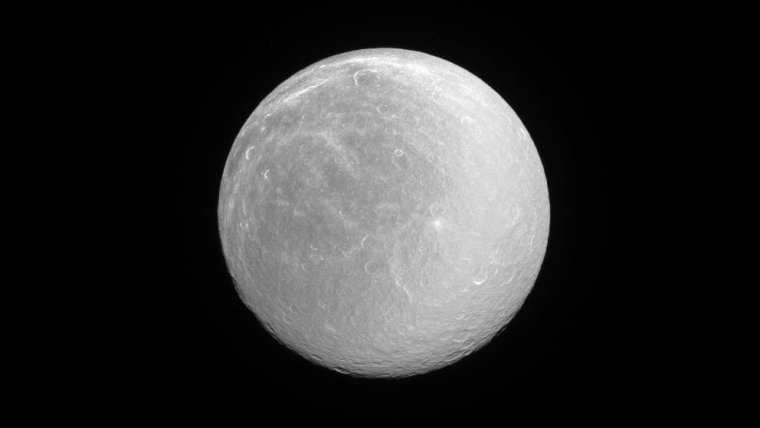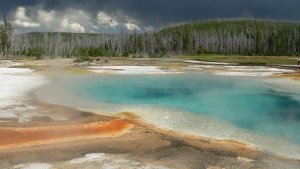| News / Science News |
Regarding Rhea
NASA | AUGUST 11, 2016
Rhea, like many moons in the outer solar system, appears dazzlingly bright in full sunlight. This is the signature of the water ice that forms most of the moon's surface.

Rhea. Credit: NASA/JPL-Caltech/Space Science Institute
Rhea (949 miles or 1,527 kilometers across) is Saturn's second largest moon after Titan. Its ancient surface is one of the most heavily cratered of all of Saturn's moons. Subtle albedo variations across the disk of Rhea hint at past geologic activity.
This view looks toward the anti-Saturn hemisphere of Rhea. North on Rhea is up and rotated 36 degrees to the right.
The image was taken with the Cassini spacecraft narrow-angle camera on June 3, 2016 using a spectral filter which preferentially admits wavelengths of ultraviolet light centered at 338 nanometers.
The view was acquired at a distance of approximately 365,000 miles (587,000 kilometers) from Rhea and at a Sun-Rhea-spacecraft, or phase, angle of 9 degrees. Image scale is 2.4 miles (3.9 kilometers) per pixel.
YOU MAY ALSO LIKE





